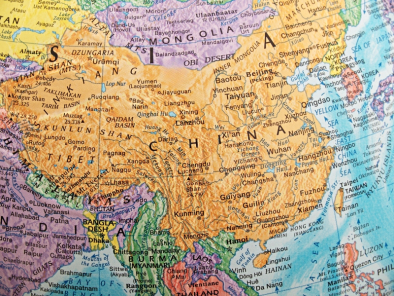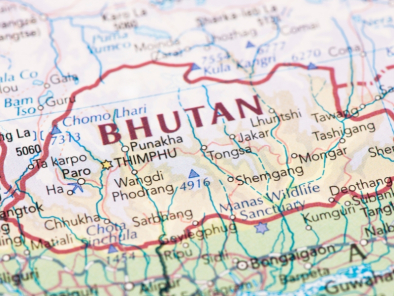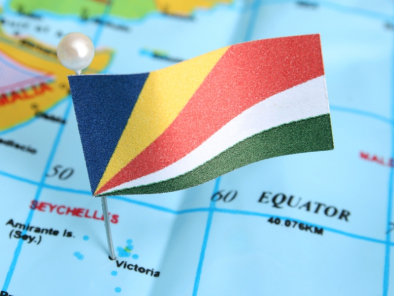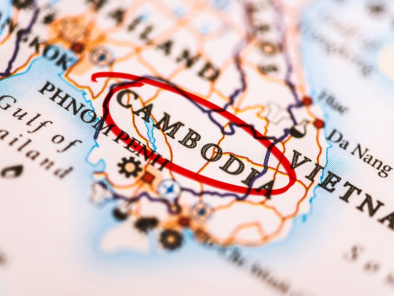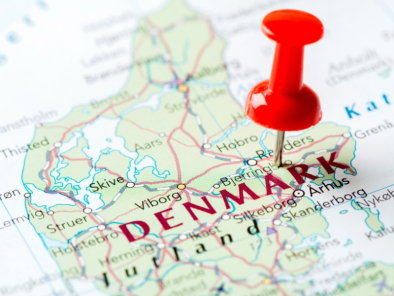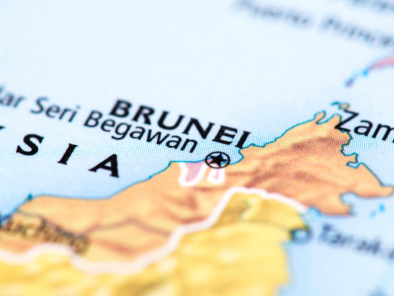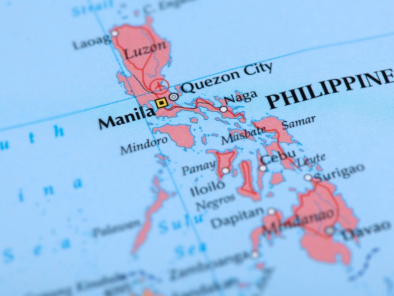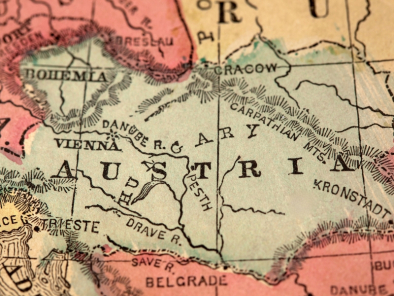CHINA
– EXPERIENCE THE LEGENDARY “MIDDLE
KINGDOM”
Despite
opening up its boundaries a great deal in recent years and welcoming increasing
numbers of tourists ever deeper into its territory, for many people China
remains one of the few remaining mystery destinations on the planet.
LOCATION :
THE
PEOPLE'S REPUBLIC OF CHINA is the third largest country in the world in terms
of area and the largest in terms of population. China
has shared borders for centuries with Korea,
the formerly Soviet Union, Afghanistan, Pakistan,
India, Nepal, Sikkim,
Bhutan, Burma, Laos
and Vietnam.
VISA: The visa should be obtained prior to arrival in the country.
HOW
TO GET THERE :
INTERNATIONAL AIRPORT: China is served by 4 International Airports, each of them at
Beijing – Beijing
International Airport,
Shanghai – Pudong International Airport
and Hongqiao International Airport
and
Guangzhou-Baiyun International Airport
FLIGHTS
INTO CHINA
:
Cathay Pacific, Thai Airways, Malaysian Airlines,
China Eastern, Air China and
Air India are a few of
carriers that fly between India
and China.
DEPARTURE TAX :
When you
depart China
there is a 90 Yuan (around US$11) departure tax. Departure tax on all other
domestic flights is 50 Yuan (around US$6). Fees must be paid in Chinese
currency at a special airport tax desk before check in.
GETTING
AROUND :
Flights
Within China : All of China is
linked by air.Though there are a number of Domestic Airlines, Air China and China Eastern Airlines are the 2 main
airlines, which operate flights within internal cities in China.
Shanghai is less than two hours from Beijing. Shanghai
is also a two-hour flight from Hong Kong.
These three cities have connecting flights to small cities throughout China.
By Rail:
Travel by rail is an enjoyable, relaxing, and
inexpensive way to see China's
countryside. New or modernized equipment has replaced the old train systems in
most areas. Travellers who lack the time to cover vast distances by train can
still get a delightful taste of rail travel by journeying on popular
short-distance routes. Some examples of travel time by train: 15 hours from Shanghai to Beijing, 2
hours from Shanghai to Hangzhou,
and 45 minutes from Shanghai to Suzhou. A train from Hong Kong to Beijing takes 28 hours. A
train from Xi'an to Beijing takes 14 hours. Normally, hotels
provide the booking service for their guests.
By Bus:
Buses are now another excellent option. With the
development over the last decade of a "National Highway system", luxurious
coaches have become an increasingly popular mode of transportation for
tourists.
By Taxi:
Taxis are available in all of China's major
cities. Always carry your hotel card with you, and ask the hotel concierge to
write down the address of your destination in Chinese characters.
Although in larger cities like Beijing,
Shanghai and Guangzhou, English is widely spoken among the
taxi drivers, many drivers in other cities may not understand English well.
CURRENCY
:
China's currency
is the Renminbi (RMB), usually called the Yuan. Ten Jiao make up one Yuan. The
Bank of China has exchange desks for foreign currency and travellers cheques
with convenient hours at all hotels, airports, Friendship Stores and others
shopping areas. Visa, Master Card, American Express, Diner's Club, Federal
Card, Million Card, and JCB credit cards are accepted at most hotels and
state-run shops in the major cities. Some of the cards like Visa and American
Express can be used to get cash advance in the main office of the Bank of
China. Travellers are advised to pay in Yuan when shopping in smaller shops, at
restaurants, and in smaller hotels
BUISNESS
:
In China, businesses usually open from
8:00 am and close about 5:00 pm (Some cities may vary). Offices are closed for
lunch break of one hour, generally between 12:00 noon to 1:00 pm.
Unlike
western world, most Chinese supermarkets and department stores remain open on
public holidays, and some of them even extend their working hours into late
night.
CLIMATE
:
While China is a year-round destination,
the months of May, September, and October are ideal months for travel anywhere
in the country. In the north, the winters are cold, and summers are warm, with
moist monsoon air streams making it hot (80% of China's rainfall occurs between
late May and early October, mostly in the Southern regions). June through
August is a good time to visit central and northern China. Spring and autumn are the
best months for travel in Southern China. The
months of March and April is the shoulder season; while off-season is from from
November through the winter months.
CLOTHING
:
Pack lightly, and bring casual
clothes. A sturdy, comfortable pair of walking shoes is a must.
Bring
a couple of shirts, sweaters, and a jacket (depending on the season) that can
be worn in layers to accommodate China's range of climates.
TIME
:
China is 2 hours 30 minutes ahead of India
ELECTRICITY
:
Electrical appliances will require an
adapter that can change the shape of the plug prongs, as well as an electrical
voltage converter that will allow a normal 110-volt American appliance to take
220 Volt Chinese current. Throughout China 220 volt is used, although 4
& 5-star hotels are wired for use of 110-volt electrical appliances.
INTERNATIONAL
DIALLING CODE : + 86
|
LOCAL
AREA CODES :
|
Beijing: 10,
Shanghai: 21, Wuhan:
27, Xian: 29, Guangzhou:
20
|
TIPS :
Tipping is not customary in China, but visitors should be aware
that local attitudes on tipping are changing, and vary with the occasion. Many
tourists bring along inexpensive gifts to show their appreciation to guides,
drivers or others who have been helpful
LANGUAGE
:
Mandarin is commonly used in the modern China. It is
one of the five working languages designated by the United Nations. The
majority of the 55 other ethnic groups have their own languages. There are also
many dialects around the country. English is spoken at most locations tourists
are likely to visit, departure announcements and travel schedules are in
English, and there are often separate ticket counters for foreigners.
INFORMATIVE
WEBSITES :
www.cnto.org
CITIES
:
BEIJING :
If you can choose to visit only one city in China, it definitely should be the capital city
- Beijing. It
boasts of so many best attractions, not only the 'Nation's Best' but the
'World's Best'.
Accomodation
in Beijing :
There is plenty of accommodation in Beijing to suit all budgets and tastes.
A little further south, but still within walking distance of the centre is the
Chongwen district where you will find a number of reasonably priced hotels
including the very pleasant New World
Courtyard, a modern, comfortable hotel a few minutes' walk from the
main railway station with an indoor pool and gym.
Many of the best areas to look are just to the east or south of Tiananmen and
the Forbidden City. Around the central
business area of Jianguomennei, just east of Tiananmen, there are a number of
medium to top-end hotels. The modern Novotel Xingiao is a reasonably priced option, with good facilities
including a restaurant and spa. Alternatively try the New Otani Chang Fu Chong hotel, which offers
stylish contemporary accommodation, with magnificent views over the city.
The busy shopping area of Wanfujing also has many hotels extremely conveniently
located for central amenities.
Must
– Sees :
The
Forbidden City :
Central
to both Beijing
itself and to its history as capital of the Middle Kingdom, the majestic
600-year-old palatial grounds - home to 24 Ming and Qing Dynasty emperors - are
suitably grand. The imposing pavilions, courtyards and exquisitely ornate
buildings radiate imperial splendour. Over 900,000 cultural relics are housed
in the palace museum alone. A day-long tour of the Forbidden City is an
essential part of a visit to Beijing,
and yields fascinating insights into the lives and daily rituals of the
Mandarins.
*Large-scale
renovation work on the Forbidden City is now
taking place and is not expected to be complete until 2020. The site will
remain open to visitors but some inconvenience may be caused.
Entrance from Tiananmen
Square: Open: daily 08h30-17h00. Admission: CNY40 (Nov-Mar),
CNY60 (Apr-Oct) per person.
Temple of Heaven :
This striking piece of Ming Dynasty architecture - now a popular
symbol for Beijing
- was the site of the emperors' annual sacrificial rites offered to the gods in
return for good harvests. Visit in the early morning when locals practise
tai-chi among the trees; or be rewarded in the late afternoon with sounds of
old folk tunes sung by Beijingers who gather there to enjoy the dusk.
*Renovation work on the Hall of Prayer for Good Harvest has finished, but
follow up work is still underway and may therefore cause some inconvenience.
Entrance
: Open: 06h00-21h00. Admission: CNY35 per person.
The
Summer Palace :
This
Qing Dynasty imperial summer retreat is probably one of the most aesthetically
pleasing historical sites in Beijing.
There are several attractions here including the extravagant marble boat
on the shore of Kunming
Lake, built by the Empress Dowager Cixi, and the Pavilion of the Fragrance
of Buddha, which affords marvellous views of Kunming Lake
and the palace area. Boating and swimming in the lake are popular in summer,
while skating is possible in winter.
Entrance : Open: daily 08h30-17h00.
Admission: CNY50 per person.
Tiananmen Square :
Of national symbolic significance, this huge square is presided
over by the well-known and easily recognisable picture of Chairman Mao hanging on
Tiananmen, the Gate of Heavenly Peace. Forever etched into the international psyche, the square was where
Mao proclaimed the founding of The People's Republic of China in 1949.
The square lies directly south of the Forbidden City
and north of Qianmen (the old Front Gate), a well-preserved and impressive
remnant of the city's old fortifications. To get there, take the subway to the Tiananmen Dong (East) station.
Excursions
:
The
Great Wall of China :
One of the greatest
achievements ever undertaken by mankind at any time in history, the Great Wall of China has rightly become one of the world's
most famous historical attractions. It is a truly amazing display of human
endeavour, running for a total of 6,350km from east to west (though this
includes sections that have collapsed and are no longer visible).
The most accessible places to see the Wall from Beijing are at Badaling or Mutianyu, which are easily reached in a day trip and it is one place where you
can get the impression of what a formidable structure the wall really was in
its day.
There are numerous companies offering coach trips to Badaling or Mutianyu, with
prices from around CNY300 per person. If you want to visit the wall on own own
then pick up a local mini-bus at Quianmen Station. For CNY50 per person these
buses will take you to Badaling via the Ming Tombs and Juyongguan, from where
you get a great view of the wall snaking over the valleys ahead. Be warned, the
mini-bus round-trip takes around 10hrs, and doesn't include such things as
air-conditioning or a tour guide that speaks your language.
Ming
Tombs :
Easily
combined with a day trip to see the Great Wall, the Ming Tombs 50km
north-west of Beijing
are a fascinating glimpse at the power and wealth of the Chinese dynasty that ruled the
country in the Middle Ages. As significant culturally as the Great Pyramids
of Egypt this complex is home to the tombs of no less than 13 of China's
Ming Dynasty Emperors.
You have to pay for all elements of the complex, including to walk the Sacred Way.
Prices per person vary between low (Nov-Mar) and high (Apr-Oct) season and
are as follows: Sacred Way, CNY20/35; Dingling Tomb, CNY40/CNY60; Changling
Tomb, CNY30/CNY45. | |
|
|
GUILIN :
Guilin is regarded in China
as the country’s most picturesque city. The stunning landscape in which the
city is situated has a kind of magic that is all its own. The strangely shaped
hills, or karsts, with the verdant vegetation ranging from bamboo to conifers
together with wonderful caves make Guilin
such an attraction for tourists.
Guilin is considered to be the pearl
of China's
thriving tourist industry on account of the natural beauty and historic
treasures.
Accomodation in Guilin :
Guilin is full of hotels, including
the Sheraton on the Li River and the Bravo on Rong Lake
in the centre of town. There are many quality hotels both near the Li River on
Binjiang Lu and in the centre of the city on Zhongshan Lu. Most but not
all will accept foreigners. Stay away from the area near the main train
station, where it is noisy, crowded, and a bit more dangerous.
Always have a look at the room before making a decision.
MUST SEES :
Reed Flute Cave :
In the north-western edge of the city the Reed Flute Cave is undoubtedly one of the more
remarkable of the region's many limestone caves. Half a kilometre of
subterranean caverns can be toured, all filled with stalactites and
stalagmites. Coloured lighting casts eery effects on the stone formations,
reflected in the watery pools that fill much of the complex. It is possible to
take a short boat-ride through part of the caves and there is even a tearoom
and floating pavilion in the largest lake. The cave is named after the reeds
that grow on the mountain side and that once hid the original tiny entrance
from view. These thick grasses can be cut to make traditional wind instruments,
and you can even buy some of the ancient "reed flutes" from the gift
shop.
Admission: CNY60 per person.
Li River cruise :
A half- or full-day boat ride down the Li River from Guilin
is the reason for most people's visit to the city.For the 75km between Guilin
and Yangshuo the river flows through some of the most spectacular limestone
karst scenery found anywhere in the world. Massive pillars of forested rock
rise on either side of the river and its tributaries, their sheer sides
plunging right down to the water's edge. Many of the hills are named after
their shape, thus you have Rooster Fighting Pagoda and the distinctive Elephant Trunk Hill along the river's edge. In Guilin
you can buy boat tickets at the end of Nanhuan Lu near the river. Unfortunately
for tourists, the local government has cracked down on illegal operators and
charters are now quite expensive (up to CNY500).
KUNMING :
Kunming, capital of Yunnan Province,
with a history of more than 2400 years, owes its importance to the fact that it
was the gateway to the celebrated Silk Road.
Kunming enjoys a pleasant climate and
does its best to live up to its title of 'the City of Eternal Spring'. Whenever
you are planning to go, the temperature is always pleasant. With its convenient
transport links in and out of the city, Kunming
welcomes and sees off tens of thousands of tourists every day.
Accomodation in Kunming :
Kunming has a good range of
accommodation, from basic to business-style accommodation with swimming pools
and all the frills. As the city is fairly small, it's not difficult to find
accommodation within easy walking distance of the central attractions and
entertainment, though it's worth bearing in mind that many of Kunming's more
interesting attractions are actually a bus ride out of the centre, so you may
still need to rely on public transport (or taxis) to get around to a certain
extent.
The massive Sakura has all the mod cons you'd expect and is popular with
expat business people. Its location is ideal for eating and shopping - and
there's a popular Thai Restaurant on one of the higher floors. In the
evenings, the ground floor Jazz Bar offers a relaxing space with an excellent
selection of cocktails and English-speaking entertainers. Tighter budgets might
be better served with the comfortable Uchoice, still in the city centre
if not quite to the same standard as the Kai Wah.
MUST SEES :
Daguan Park
Perched south-west of the city centre on the northern
tip of Lake
Dian (Dianchi), this lovely old park (Daguan
Gongyuan) is, for many, the
epitome of Chinese classical beauty. Among the bamboo and plum blossoms, the
600-year-old park's centrepiece is the 17th-century pavilion, Daguan
Lo. The structure is
famously adorned with a 180-character-long couplet composed by the Qing Dynasty
scholar Sun Ranweng (1700-1775), who was inspired by the lake's stunning
beauty. As you wander around the park, you'll discover Chinese chess and card
players sitting in
the shade while families eat picnics and fly kites
nearby. The lake itself is as much a playground as it is a poet's inspiration.
Speedboats whizz across the waters to the Western Hills on the opposite shore,
shooting past the more leisurely longboats taking passengers on a
relaxing tour of the lake. Open: 08h30-18h00. Admission to park: CNY10 per
person. Charges for hiring boats vary.
Stone Forest
One of the more bizarre natural phenomena in the country,
the soaring limestone peaks that make up the stone forest (Shilin) wouldn't look out of place
in a sci-fi film. Centuries of erosion and splitting from rainwater have caused
the grey rocks to form a mass of multi-formed pillars resembling huge fingers
pointing up to the sky (or trees, if you prefer). Located around 80km east of
town in Lunan County, it's a bit of a trek, but well
worth it to see these unique geological formations. The area is also of
interest to amateur anthropologists, as it is home to the Sani, an
ethnically and culturally distinct people, who still practise their traditional
way of life. They are particularly noted for their weaving skills, evidenced in
their wonderfully colourful costumes. Since this is a major attraction, it's
worth wandering a little off the beaten track away from the tour groups, where
you'll find the real stone forest, quiet and wild. You can get there from
Kunming by train, taking about 1hr30 mins, departing Kunming around 08h00 and
returning around 14h00. There are numerous tour buses making the journey
(taking around 2hrs) from hotels, which provide a convenient way of getting
there. A better bet, if you can get a group of four or five together, is to
hire a small van with a driver, costing around CNY200.
SHANGHAI
:
Shanghai is situated on the estuary of
Yangtze River of China.
Known as "the Oriental Paris", Shanghai is a shopper's
paradise. Shanghai, a vigorous and energetic
international metro-polis, welcomes people from all over the world to enjoy its
special atmosphere. This modern metropolis with its rich heritage of ancient
Chinese culture has much to see and do.
Accomodation in Shanghai :
From travellers' hostels to five star luxury hotels,
there is accommodation in Shanghai
to suit all budgets and tastes. Most of the large, international chains have
hotels in the city, many of them with more than one branch.
You will find a number of hotels near Shanghai
Central Station, obviously a good choice if you are planning to travel by rail
to or from the city. The Liang An here is a large multi-storey hotel with an impressive
façade and fountain frontispiece. Although it is far from the finest hotel in
the city it is a good choice for anyone looking for reasonably priced
accommodation and is certainly convenient for arriving in or leaving the city.
Elsewhere there are plenty of options in the Jing'an area and neighbouring
Huangpu district, the prime areas for central attractions and entertainment.
Next to the Bund you'll find some more European-looking hotels, relics of Shanghai's trading
hey-day. Nowadays these are interspersed with some impressive modern buildings,
catering to business travellers and tourists alike. The Yangtze is a
large boutique hotel dating back to the 1930's with an impressive façade and
conveniently located close to the Shanghai
Museum and People's
Square. All rooms were recently renovated to a high standard but it still
remains a good choice for anyone seeking reasonably priced accommodation.
The modern development of Pudong has an increasing
number of hotels, arguably the most impressive of which is the Oriental
Riverside. Located just across the river from the Bund, the exterior of the
hotel is an amazing space-age design, which fits in well with the ultra-modern
architecture that surrounds it. Inside, it contains all the amenities you'd
expect from a five-star hotel
MUST
SEES :
Walk
the Bund :
One of Shanghai's most historical streets, the Bund
(or Zhongshan Lu) stretches along the west bank of the Huangpu river,
and has an air of space and freedom about it. The Bund gradually gained status
as the "foreign street" of Shanghai
where companies and consulates from all over the world set up shop, giving it a
cosmopolitan atmosphere.The most amazing views of the skyscrapers of the
modern Pudong district can be seen across the river, especially at night. For
maximum enjoyment, take a ferry (Duration 10 minutes. Tickets: CNY0.50
per person. Nearest metro Lujiazui) from Pudong to the south end of the Bund,
taking in the view first and then visiting some of the old buildings.
Jade Buddha Temple
:
Arguably
the most beautiful temple in Shanghai, the Jade
Buddha Temple,
or Yufo Si, is a Buddhist sanctuary, built in 1882 and still very much in use.
The two Buddha statues brought from Burma for which the temple is famed - one
seated, the other reclining - are quite stunning, made from an unusual, almost
translucent white jade, giving them
an appropriately other-worldly appearance.
Corner
of Jiangning Lu and Anyuan Lu in north-west Shanghai. Nearest metro: Shanghai
station (line 1 and Pearl line), about 1km
away. Open: 08h00-17h00. Admission: CNY20.
Pudong Financial District :
The
showcase of Shanghai's modernisation drive, the Pudong district, just across
the river from the Bund, is the holder of all the "tallest",
"biggest" and "newest" titles in Shanghai. The area that
has seen such rapid growth in recent years is now a serious high-rise
mini-city. Its most famous building is the Pearl TV Tower, which, at
468m high, is the tallest television tower in Asia
and offers superb panoramic views of the city from its observation deck.
Just
nearby is the equally gargantuan Jin Mao building, a sleek, modern
edifice using aspects of traditional Chinese design. Once the fourth highest
building in the world it houses restaurants, bars and the Grand Hyatt Hotel as
well as its own observation area.
Further
out to the east is Century Park, Shanghai's
largest open-space, made up of grasslands, forests and lakes. Take note that
various activities often associated with trips to the park are prohibited, including
playing football, flying kites, walking dogs, or being "improperly
dressed" and offenders are reprimanded under the "Shanghai
Environmental Sanitation Management ". You've been warned.
Pearl
TV Tower: Open: daily 08h30-21h30. Tel: +86 (0)21-5879-1888. Admission: CNY50
(upper sphere); CNY100 space module. Century
Park: Open: daily
07h00-18h00. Jin Mao building Open: daily 08h30-22h00. Admission: CNY50.
Yu Gardens :
You
can't miss the souvenir, jewellery and antique shops in the Yuyuan area of the
city, which has a something of an old-world feel. And it's worth having some
tea at the famous Huxinting Tea House nearby, overpriced but very
atmospheric. The undoubted highlight of this part of town is the classical Qing
Dynasty Yu Gardens with their pavilions and ponds linked by a maze of bridges,
originally built between 1559 and 1577 for the Pan family, rich Ming Dynasty
officials.
Yuyuan
Shangcheng, Yuyuan Lu, South of the Bund close to the junction of Henan South
Lu and Fangbang Central Lu. Gardens open: daily 08h30-16h30. Admission: CNY35.
Tel: +86 (0)21-6328-3251.
Excursions :
Hangzhou :
Only
a couple of hours from the bustling metropolis of Shanghai, but aeons away in
atmosphere, the quiet, meandering lanes of Hangzhou are bound to refresh any
jaded city dweller.
Stroll
along the West
Lake promenade,
wander along the town's charming old streets, hike up the green rolling hills
and spend hours relaxing in one of the many tea houses. Hangzhou is famous for its high quality green
tea, Longjing, which you will see growing - and being drunk - wherever you go.
Regular
express trains leave from Shanghai south railway
station, and the ride takes two hours. Hard seat costs approximately CNY29 p.p.
and soft seat CNY45 p.p.. Tour buses also make the trip starting at the Shanghai stadium, but are less comfortable and take longer
to leave or enter Shanghai
in rush hour traffic.
Suzhou : Lying on the edge of Lake Taihu,
the beautiful 2,500 year old city of Suzhou
is famed for its numerous stunning gardens and pavilions set amid winding
canals. The delightful gardens are undoubtedly among the best in China. How
could anyone resist visiting somewhere called the Lingering Garden
or, better still, the Humble Administrator's Garden (honest!).
All
designed in traditional style and many of them dating back to the 16th/17th
centuries, these exquisite oases
are home to little carved wooden bridges leading you over ponds, towering
pavilions with latticed windows and bizarre manmade rock formations - all
quintessentially Chinese.
Suzhou is around
500km from Shanghai
and can be reached by train.
XIAN :
Xian,
the eternal city, records the great changes of the Chinese nation just like a
living history book. Called Chang'an in ancient times, Xian is one of the
birthplaces of the ancient civilization in the Yellow River Basin
area of the country. Xian is the capital of Shaanxi province, located in the southern
part of the Guanzhong Plain. Except the colder winter, any season is relatively
suitable for traveling.
Accomodation in Xian :
Xian
is a well-established tourism destination and accommodation is plentiful and affordable. Locations
within the City Walls command higher prices, with top international chains
being found along Dong Dajie and similar main thoroughfares.
The Shangri La Golden Flower is
a gleaming modern edifice perfectly located for sightseeing. Accommodation is
luxurious and welcoming, with a number of restaurants and bars to dine in.
Alternatively downtown you will find the equally impressive Aurum International, which stands
adjacent to the Xian's New City
Square and close to the Bell Tower.
MUST SEES :
The Terracotta Warriors :
The
Warriors were meticulously cast to be the personal army of Chinese Emperor Qin Shi Huang
(c.246BC) in the afterlife. His colossal achievements (unifying calligraphy,
laws, weights and measures, and incepting construction of the Great Wall) were
achieved by ruthless tyranny, enslavement, and ruinous taxation. Hated by his
subjects, he realised that his tomb's construction would require total secrecy.
The thousands of craftsmen who had cast the warriors were rewarded by being
buried alive - to silence them forever. However, even such extreme measures
could not conceal details of the project totally, and within three years of
completion, the complex had already been ransacked for the (very real) weapons
in the arms of the statues, in a coup attempt by a former trusted General.
Minibuses (marked "Terracotta Warriors" in English) leave from the
unofficial bus park in front of the railway station in Xian, or slower but
frequent local buses 307 and 306 will get you there eventually. Exhibition
complex open: 08h30-18h00. Admission p.p.: CNY90 (Mar-Nov); CNY65 (Dec-Feb).
Great Goose Pagoda :
The Great Goose Pagoda (Xiaozhai
Dong Lu. Open: daily 08h00-18h00. Admission: CNY35p.p.) was a major centre of
Buddhist worship in Imperial Xian - the origin of the name remains unexplained,
as it does for the Small Goose Pagoda
(Youyixi Lu. Open: daily 08h00-18h00. Admission: CNY10). Both were originally
used for housing Buddhist manuscripts and can be ascended for views across the
city. The Great Goose Pagoda is 4km south of the city and is often included in
tours to the Terracotta Warriors; its smaller counterpart is just 1km south and
thus more easily reached independently.
Drum Tower
and Bell Tower :
Throughout the Empire, the working day
would open with a bell carillon, and end on a drum-beat. Two great towers stand
in the very centre of Xian to perform these timekeeping functions, the Bell
Tower and the Drum Tower (Towers open: daily 08h30-17h30, admission:
CNY20 p.p. each). The Bell
Tower remains the central
point of the city, and the focal point of the grid-system of roads.
SHOPPING
AND MUST-BUYS:
China is a
shopper's delight. There is an incredible selection of boutique shops,
department stores, and hotel shopping arcades to browse through. Or you can try
bargain hunting at one of the new "free markets" that are springing
up all over the country.
You're sure to be dazzled by the unique array of beautiful
or practical gifts available in China,
from high quality silks and porcelains to antique screens and traditional
Chinese herbal medicines.
Throughout China,
shops offer unique ceramics, paintings, stone rubbings, embroideries, carpets,
furniture, jade carvings, custom-carved signature chopsticks, antiques, books,
and much more. Shop personnel will often pack and arrange for shipping of bulky
purchases back home.
Prices are usually clearly marked in stores and shops, and
English is spoken in most tourist areas. Don't miss browsing through one of the
state-run Friendship Stores; they are still considered as one of the best
places to find an excellent selection of quality merchandise. One thing you
must remember during your shopping is asking for the receipt.
Shops & Office Hours:
Businesses usually open from 8:00 to
8:30 am and close about 7:30 or 8:00 pm
